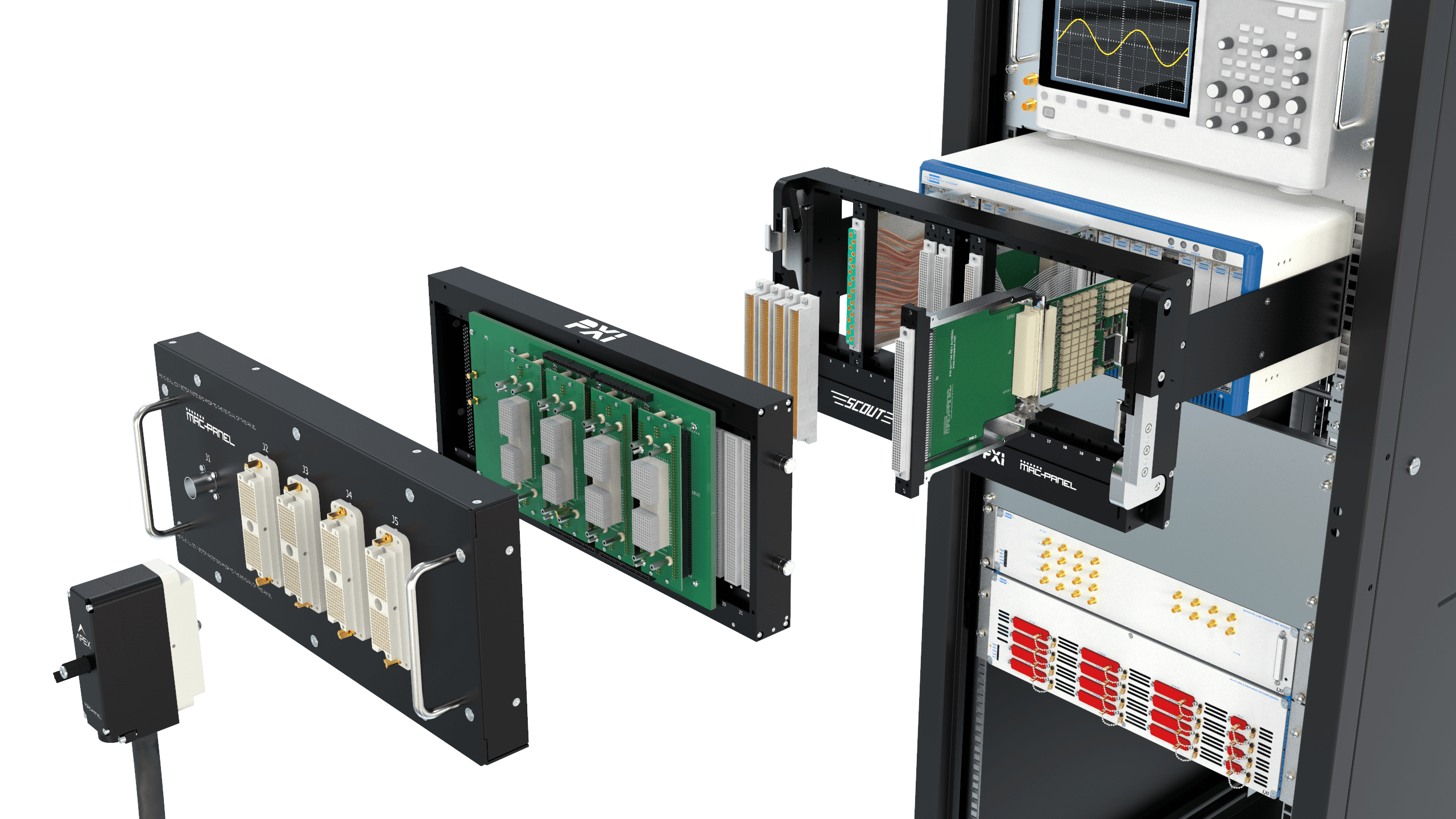EV Tester
Car manufacturer turns to MAC Panel for help
Overview
Electric vehicles (EV) have created an inflection point in automated test as disparate technologies converge. As the leading manufacture of new generation electric vehicles, the test organization demanded quality of test of their components, while at lower costs. Abandoning their rack-and-stack box instruments and closed architectures, the company invested in smarter prototyping test systems and automated test equipment (ATE) that scaled with their requirements.

Customer Profile
- Automotive and Energy company
- Specialized in electric car design and manufacturing
- Business strategy is to emulate technological-product life cycles
Challanges
- Quick Turnaround Time – A multi-system interchangeable interconnect approach.
- Modular— A test system architecture able to adapt to rapid product evolution.
- Reduce test system build-time – Deployable in 8 weeks.
Solutions
- Quickly shipped interconnect technology
- Easy to install and maintain
- Use of PCBs and Flex Circuits for exact copy connections
Value Added
Enabled on-the-fly modular HIL test system capitalized on the PXI value proposition of modularity, scalability and commercial-off-the-shelf. Cabled based interfacing methodologies prevent on-the-fly adaptability.
Detailed Specs
To deliver increasingly complex electronic technologies that evolve rapidly requires an adaptable system simulation architecture to help the engineering teams address new and evolving product requirements. Working in in-vehicle system (IVS) development, engineering teams need expanded advanced electronic control technologies, such as multicore CPU architectures in the product, each run different tasks. A design objective is to thoroughly optimize architectures for advanced real-time control through feedback from the motor controls.
The test system need was a HILS system with real-world I/O that could validate the actual developmental product by interlocking with virtual models and reproducing the operating conditions of the entire system. The system required power management and diagnostic capability, feedback mechanisms: sensors, resolver, current feedback, communications stacks: UART/LIN/CAN/SPI, and various signal conditioning circuits.
Nine (9) exact-copy test systems were required to sustain a mix of DUT(Device Under Test) volumes and DUT types. Equally important, each test station along with the selected connection hardware needed to be deployed within a strict timeline of 8 weeks.
MAC Panel’s SCOUT Advanced Mass Interconnect was selected because it complemented the modular open industry standard PXI approach, along with its commercial-off-the-shelf deployment. SCOUT delivered a performance-centered method of interfacing PXI instrumentation to a variety of devices under test, while also being able to meet the constricted development calendar.
SCOUT’s modular approach includes the use of its DAK (Direct Access Kit) technology which attach directly to the PXI instrument face connector to form a single assembly with each PXI instrument. The SCOUT family of DAK adapters provided an off-the-shelf solution to connectivity for each of the PXI modular instruments, allowing for reduced time-to-build. In addition, the DAK technology enabled ease of instrument changeover based on DUT. Furthermore, the increased signal performance of wire free ITAs simplified product test changed over.
The use of SCOUT’s DAK and wire-free ITA technology capitalized on PXI’s modular approach, permitted use of a single test station for multiple product design evolutions. By reducing test station variants, the solution saved the customer labor and capitalized costs.
Start the Conversation
If you are ready to get started with your SCOUT experience, start the conversation now.



